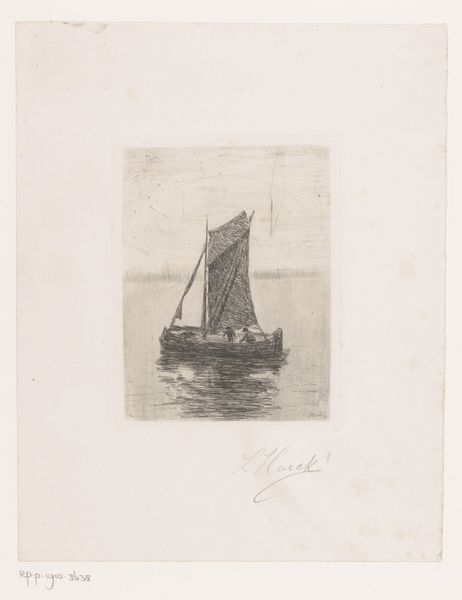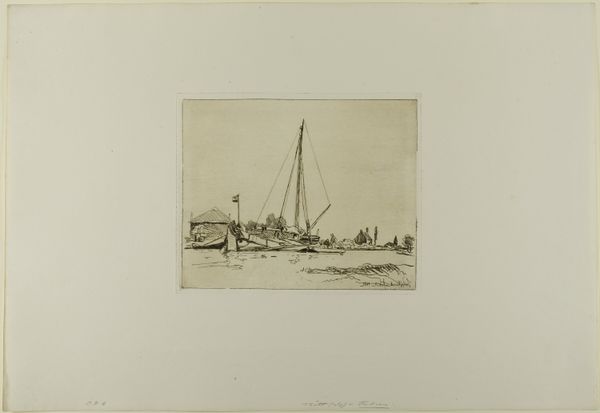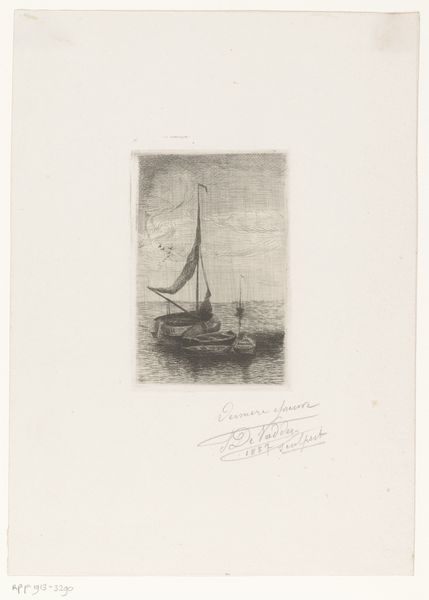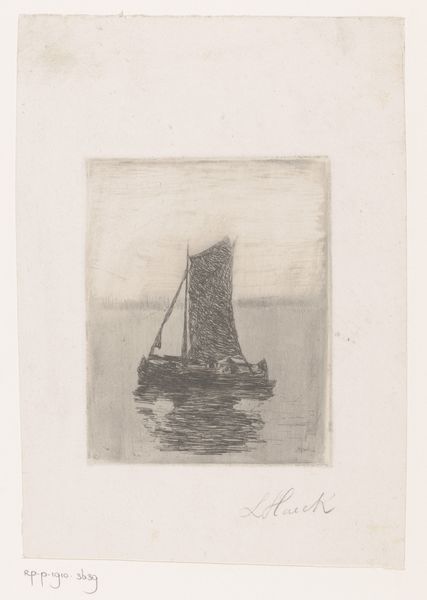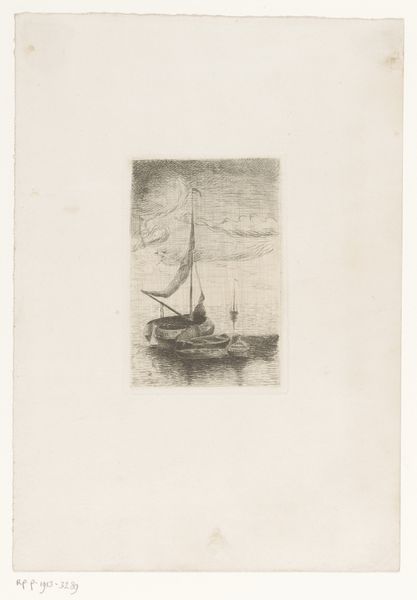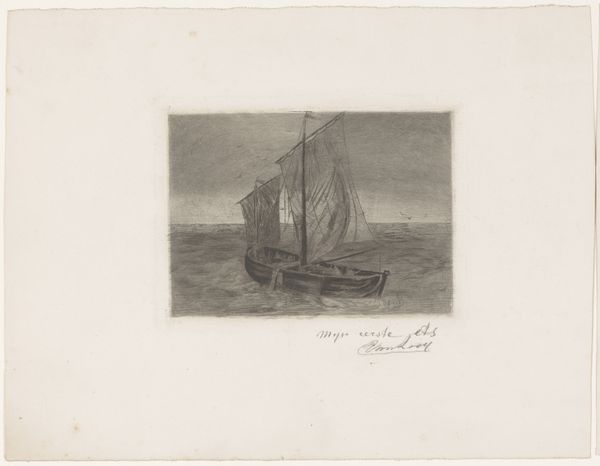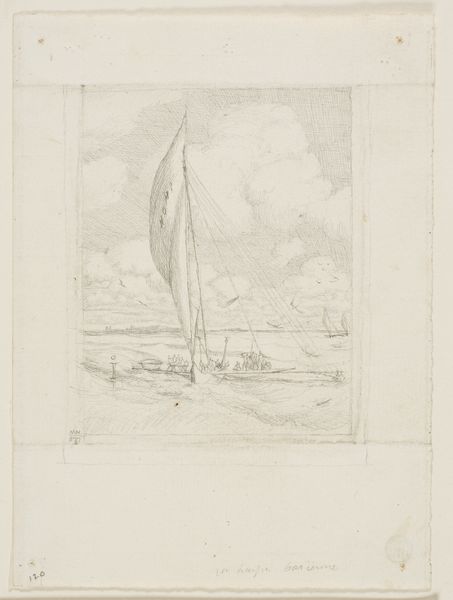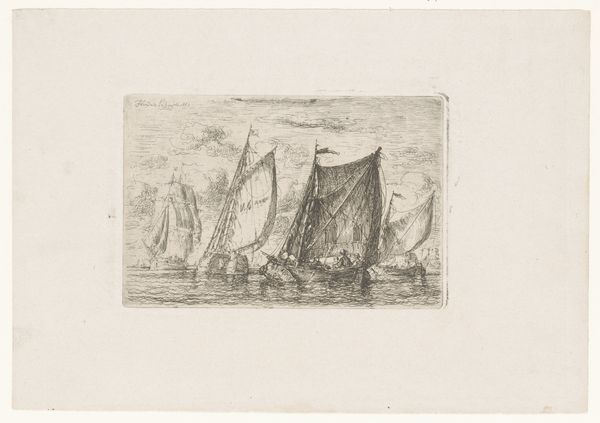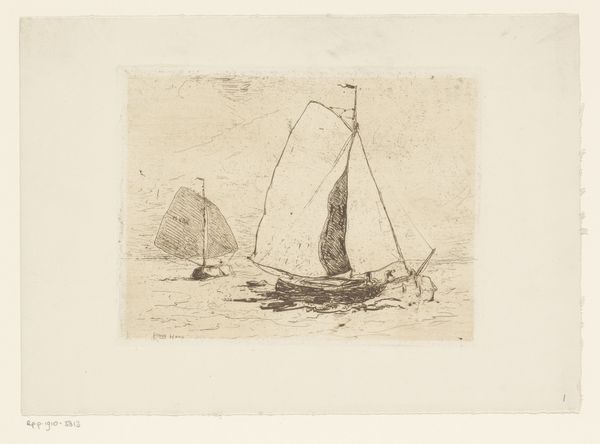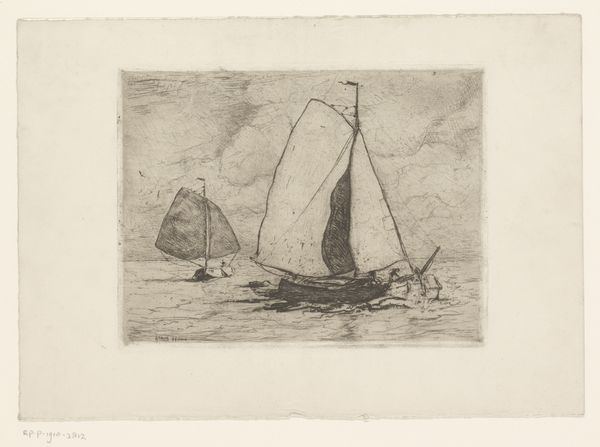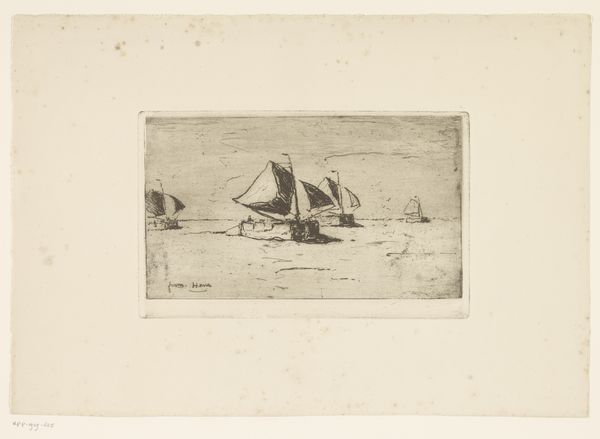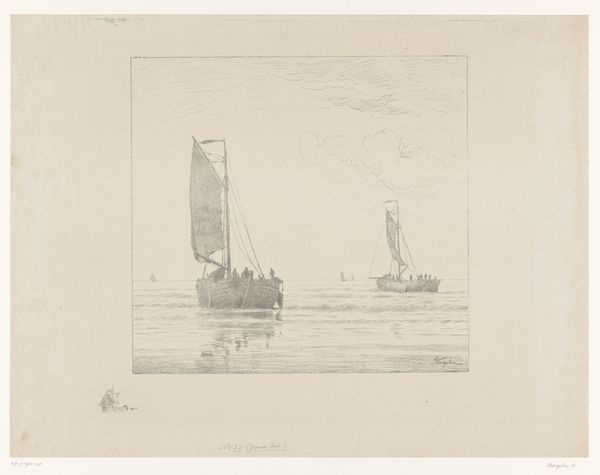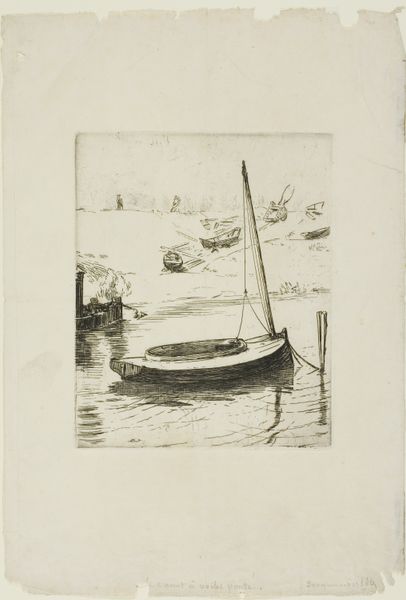
Dimensions: 141 × 80 mm (image); 141 × 80 mm (plate); 246 × 159 mm (sheet)
Copyright: Public Domain
Editor: So, this is Charles Meryon's etching, "Swift-Sailing Proa, Mulgrave Archipelago, Oceania," made in 1866. The detail in such a small image is captivating; it feels both serene and turbulent at the same time. What strikes you when you look at this? Curator: The "swiftness" Meryon captures is fascinating, particularly considering the colonial gaze often fixed upon the Pacific. It pushes us to question whose perspective we're truly seeing. Consider the etymology of the word "proa" itself. Editor: I'm not familiar. Curator: It reflects a European interpretation and imposition of language onto indigenous technology. Shouldn’t we interrogate how European artists depicted non-European subjects and challenge the assumed authority embedded within these historical representations? Who gets to name, and thus, in a way, own, these images? Editor: That makes me rethink my initial reaction. It's not just a boat; it's a symbol of cultural interaction and power dynamics. The romanticism, in this light, could be a veiled form of idealization that obscures a more complicated reality. Curator: Precisely. How can we unpack the potential orientalist fantasies at play, recognizing the proa not merely as a vessel but as a site of encounter? The print becomes a textual battleground, where Western perspectives intersect – or perhaps collide – with indigenous maritime knowledge and experience. How can we make this more equitable? Editor: That is a very powerful way to look at it; thanks! It changes how I interpret not only this print but many others from the same period.
Comments
No comments
Be the first to comment and join the conversation on the ultimate creative platform.
